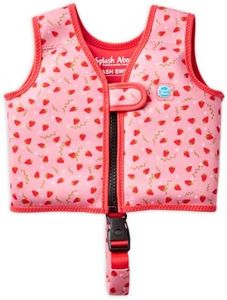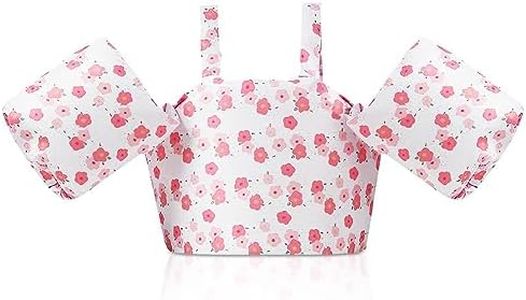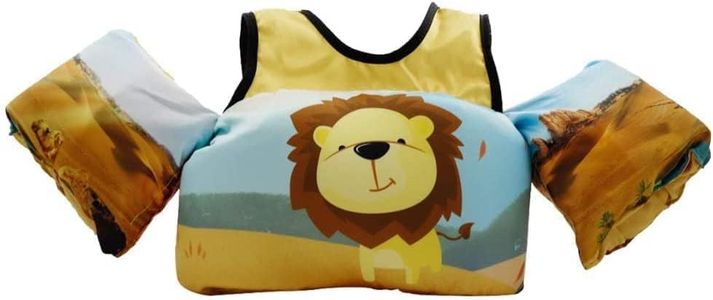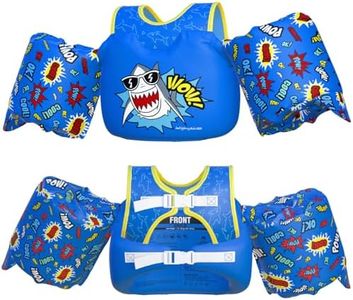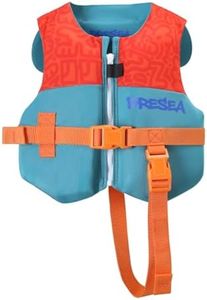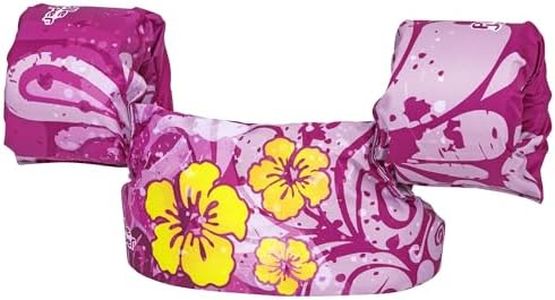We Use CookiesWe use cookies to enhance the security, performance,
functionality and for analytical and promotional activities. By continuing to browse this site you
are agreeing to our privacy policy
8 Best Puddle Jumpers
From leading brands and best sellers available on the web.Buying Guide for the Best Puddle Jumpers
Choosing puddle-jumpers, also known as children’s swim floatation devices, is important for ensuring your child's safety and comfort in the water. The goal is to find a puddle-jumper that fits well, is safe, and suits your child’s learning stage and confidence in the water. Before buying, always check for safety certifications and ensure you supervise children at all times, even when using flotation aids.Weight and Age RangeThis specification refers to the minimum and maximum user's weight and age the puddle-jumper is designed for. It’s vital because using a floatation device outside its recommended range can lead to safety hazards or discomfort. Models are usually divided into segments like infants, toddlers, and young children. Before choosing, check your child's current weight and age, and select a product that supports both. If your child is near the upper edge of a range, consider one meant for slightly bigger kids to get more use out of it.
Safety CertificationsSafety certifications mean the device has been tested to meet specific safety standards, often required in many countries. This is crucial as it guarantees some level of protection and reliability in emergency situations. Certifications may differ, but commonly referenced ones include the U.S. Coast Guard approval or European CE marking. Always look for recognized certifications and avoid products lacking them, as these may not truly protect your child.
Fit and AdjustabilityFit and adjustability are about how well the puddle-jumper conforms to your child's body and whether you can change the size for a snug fit. This is important because a poor fit can slip off or cause discomfort, affecting safety. Most puddle-jumpers have adjustable straps or buckles. When picking one, look for easy-to-use, secure adjustment systems and ensure you can get a snug, comfortable fit for your child’s torso and arms.
Buoyancy and MaterialBuoyancy refers to the product's ability to keep your child afloat, and the material impacts comfort and durability. Both are essential for both safety and enjoyment. Puddle-jumpers typically use foam or inflatable parts; foam is generally sturdier and always floats, while inflatables are lighter but need to stay inflated. Choose a buoyancy level that supports your child’s swimming confidence and ability: beginners benefit from higher buoyancy, while more confident children might prefer less bulk.
Ease of UseEase of use means how simple it is to put on, take off, and manage the puddle-jumper before and after swimming. This matters because complicated designs can lead to frustration or improper wearing. Some products are slip-on with a back buckle, while others might have multiple steps. Select a design you feel comfortable quickly putting on your child, especially if you’ll be dressing them by yourself.
Comfort and Skin-FriendlinessThis refers to how comfortable the puddle-jumper is to wear for extended periods, and if the materials are soft or prevent chafing. Because children have sensitive skin, rough or poorly-designed liners can cause irritation. Puddle-jumpers come with various covers, from basic nylon to plush, soft-fabric linings. For sensitive skin or long swimming sessions, pick a model with padded, smooth, or hypoallergenic covers.
